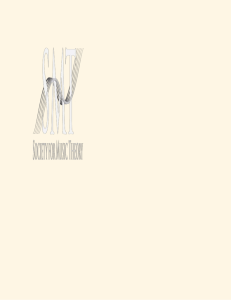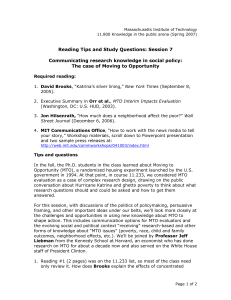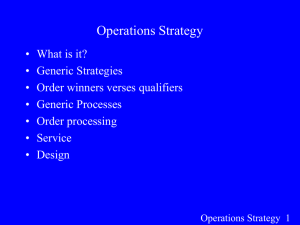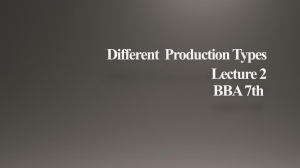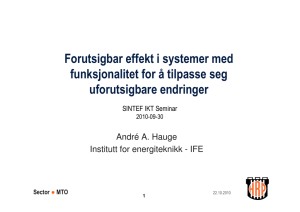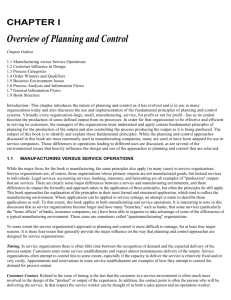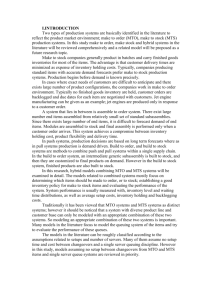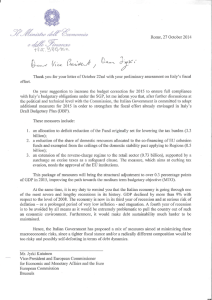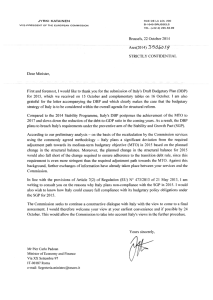“Make to order or Make to Stock Model and Application” S
advertisement
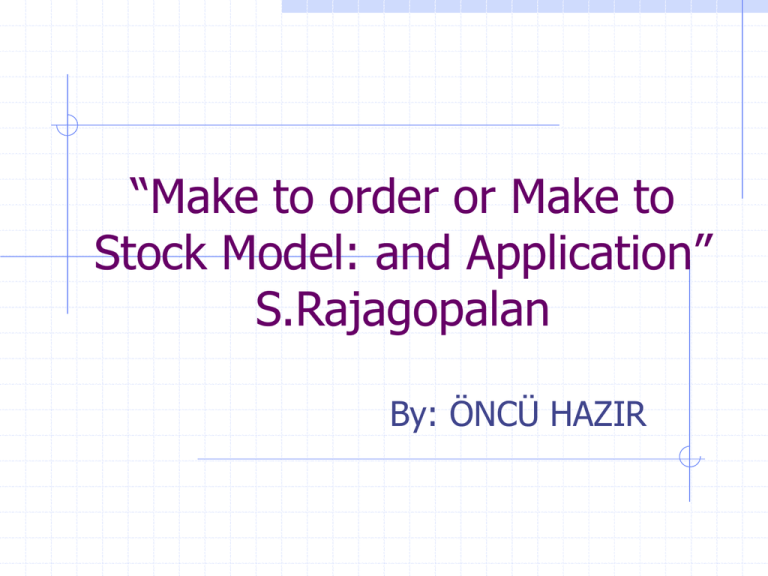
“Make to order or Make to
Stock Model: and Application”
S.Rajagopalan
By: ÖNCÜ HAZIR
Content of Presentation
Introduction
Literature Review
Assumptions
Trade-offs and Congestion Effects
General Model and Relaxed Model
Properties of Optimal Solution & Solution
Procedure
Computational Study
Experimental Insights
Introduction
Motivation is to determine whether an item is
to make to stock(MTS) or make to order(MTO)
and to offer an inventory policy for the make to
stock items.
Characteristics of the production environment is
multiple items,limited capacity and setups
between the production of consecutive items.
Objective is minimize inventory costs of MTS
items while ensuring that orders for MTO items
are fullfilled with a sepicified probability.
Literature Review
Popp(1965) made cost comparisons to make
an item MTO or MTS for a single-item
stochastic inventory model.
Williams(1984) assumed lower demand items
are MTO and higher demand items as MTS.
Federgruen and Katalan(1995,1999) allowed
the interruption of MTS items when MTO
demand is realized.
Carr and Duenyas(1998) focuses on criteria
to accept or reject MTO items.
Karmakar(1987) considers the queue length
as a decision variable.
Assumptions
Stochastic stationary, uncorrelated
demand,varying processing times and limited
capacity.
No inventory is carried for MTO items.
(Q,R) inventory policy is used for MTS items.
First come first served (FCFS) queue
discipline.
Production facility is approximated by M/G/1
queue discipline.
Assumptions
Setup and processing times are deterministic.
Type 1() service level represents probability
of no stockout.
The distribution of demand during lead time is
characterized by queue time,material
handling times are ignored.
Whenever there exists a demand for MTO in
the time period,a production order is initiated
for a batch size equal to demand quantity.
Trade-offs and Congestion Effects
Making an item to order:
Decreases inventory,
Congestion effect:
More setups and
higher utilization
Longer and
variable lead
times
Higher cycle and
safety stock for
MTS and poorer
service for MTO
Making an item to stock:
Decreasing the lot size reduces cycle stock but
increases number of setups and utilization so lead
time increases.As a result more cyle and safety stock
for MTO items and poorer service for MTO items.
Model Parameters
Processing time
Number of batches per
unit time
MTS
i+qi/i
MTO
i+(i/mi)/i
i/qi
mi
General Model
Min hi (qi / 2 f i (Gi (.),Ps ))zi
ST
i
H ( E ( w), v( w), Po ) T
qi 0
zi [0,1]
E ( x )
E ( w)
2(1 )
2
τ i (E(w), v(w))
3
E
(
x
)
2
v( w) E ( w )
3(1 )
E(w) σ i v(w) μ i2
2
Model without congestion effects
Min
hi (qi / 2)
ST
i
( i ( zi / qi (1 zi )mi ) i / i ) 1
i
qi 0
zi [0,1]
Properties of optimal solution
1)If zi 1 in an opt imalsolut ion t henμ /q m and
i i
i
γ(η) 0
2)An it em is MT Sif μ /q m /2
i i
i
3)If γ (η) γ (η) and if z 1 t henz 1
k
j
k
j
h (q /2)
i i
γ (η)
j
α (m μ /q )
i i
i i
γ (η) : Savings in inventory divided by incremental capacity
j
Solution procedure
1)Set zi=1 for all i and set
= maxi {mi2ihi/2i}
2)Compute i for all items, if i <= 0 set zi=0,
arrange items in order of decreasing ratio i
3) Set zi=0 in the order determined
above.Compute lot sizes and costs, check
whether total cost declines.If cost decreases
stop.
For the heuristic with congestion effects the
ratio i includes cost of safety stock and for a
given value of zi, a non-linear program is
solved.
Application of Model
Computational Study
The heuristic performance was
evaluated relative to lower bounds.
Average percentage duality gap
between heuristic gap and lower bound
was performance criteria.
It is found that the heuristic works well.
Experimental Insights
The MTS/MTO decisions with and without
considering congestion effects were similar.
The lowest and highest demand items are
MTO medium demand items are MTS since
incremental capacity to make an item to MTO
is concave in the average demand.
In addition to items demand decision
depends on processing times,unit holding
cost and set uptime.
As size of time bucket increases, number of
MTO items increase and total cost
decreases.However customer responsiveness
decreases.
